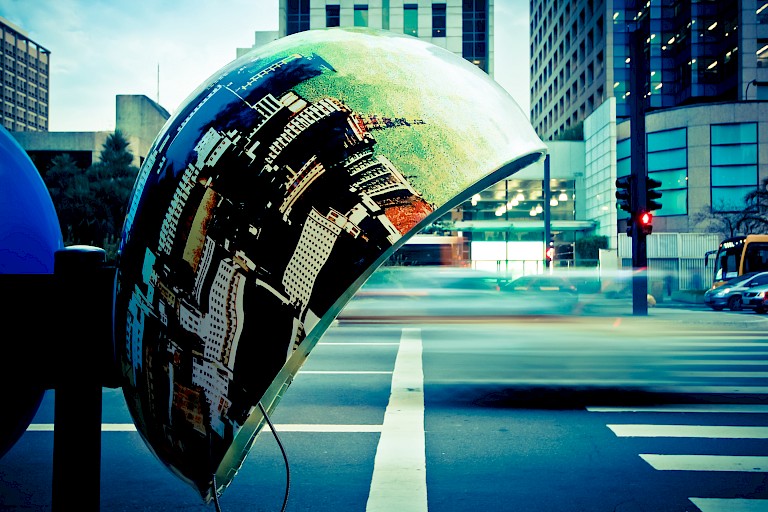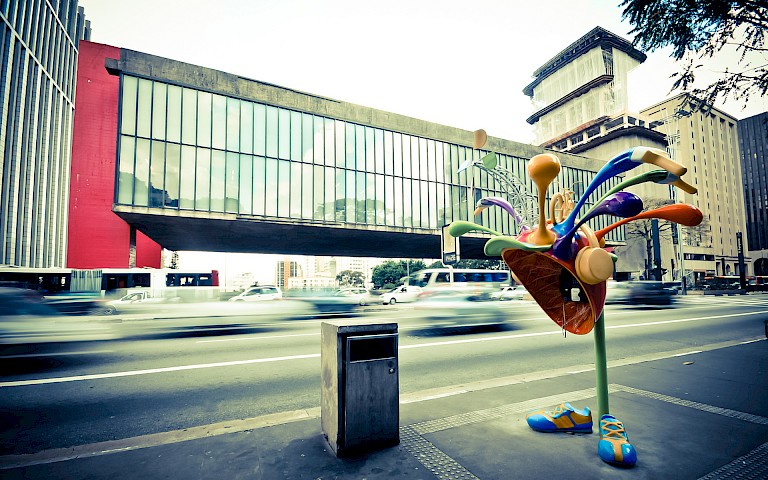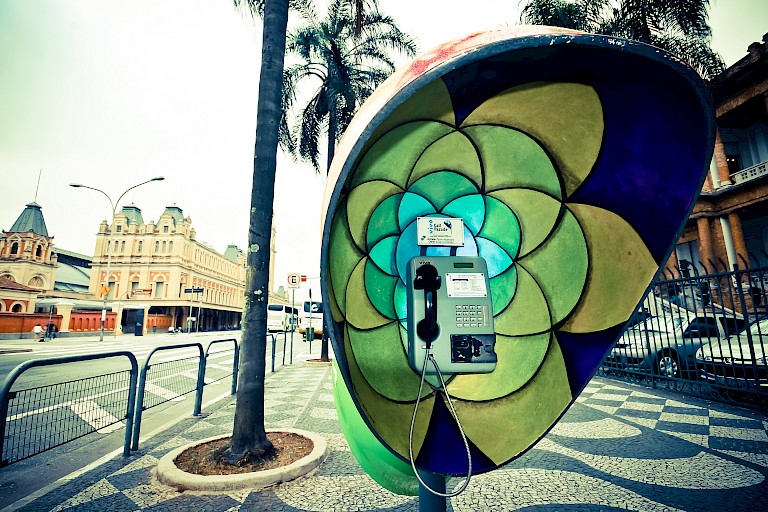



Call Parade began with a public call for proposals. Submissions were then shortlisted to 100 by a jury. The 100 participating artists were asked to transform phone booths along “eight artistic circuits” in an original way. A survey of documentary photographs reveals a diverse range of figurative and abstract designs covering a multiplicity of themes or subject matter. One phone booth took on the graphic appearance of an exposed human brain, another looked like a malformed, mirrored disco ball and yet another presented audiences with abstract floral designs. Many of the other booths dwelt on portraits of people and urban as well as rural landscapes. The various themes in Call Parade may be considered as a whole to constitute various facets of the São Paolo public or social “imaginary.”
In placemaking terms, the resulting exhibition was successful in temporarily altering the visual spaces of São Paolo’s publics, with numerous eye-catching phone booths capturing the attention of residents and visitors. In terms of the sponsor/commissioner’s goals of revitalizing disused public phone booths and increasing public use, the project certainly proved its worth. By Vivo’s own measurements, vandalizing of public phone booths dropped by 18% and payphone calls increased by 15%. We might interpret these measures to say that the aesthetic transformation of the phone booths generated emotional investment by members of the participating neighborhoods in local public spaces and amenities. These emotional investments, or attachments, are critical in placemaking because they motivate individuals and communities to actively use and care for shared spaces.
We might also note something more unsettling, namely, that the sponsorship of this expression of the social imaginary by a telecommunications corporation suggests a problematic coupling of capital and consumerism with this imaginary. One might speculate that the “revitalization” of public phones contributed to the kind of consumerism characteristic of the contemporary moment, the intense and conspicuous consumption of information and communication (through cell phones, tablets and laptops). The use of public payphones did not reduce the use of mobile phones, but simply augmented mobile phone use to create an even more media saturated urban assemblage. This is, of course, in the interests of the project sponsor. Whether it is ultimately in the public interest is another matter altogether.
All copyright belongs to Shanghai Academy of Fine Arts, Shanghai University.



